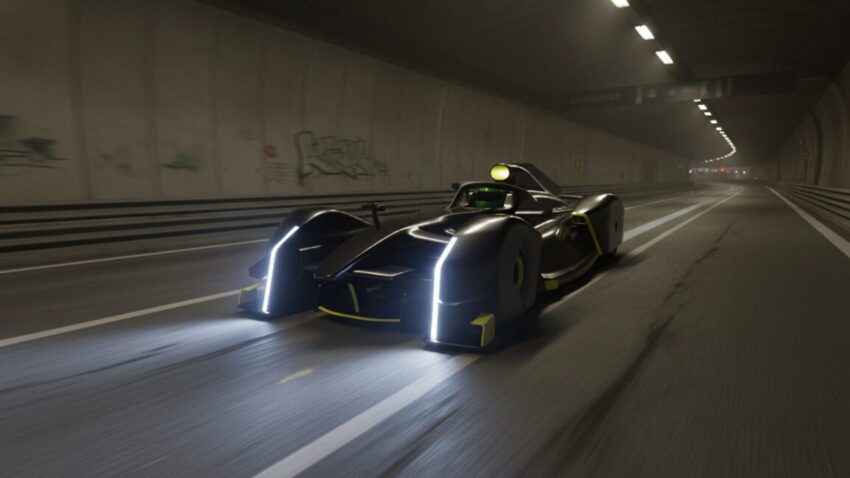
twin suction turbines and 3-gs in slow The DRG-Lola represents a groundbreaking leap in electric racing technology, aiming to outpace traditional motorsport benchmarks.
twin suction turbines and 3-gs in slow
Introduction to the DRG-Lola
In recent years, the world of motorsport has witnessed a surge in innovative technologies, particularly in the realm of single-seat race cars. This trend is exemplified by the introduction of the DRG-Lola, a revolutionary electric racing concept that promises to redefine performance standards. Developed by Lola Cars, a renowned British race car manufacturer, in collaboration with Lucas di Grassi, a seasoned driver and advocate for sustainable racing technologies, the DRG-Lola is designed to not only compete but to excel on the racetrack.
The Vision Behind the DRG-Lola
Lucas di Grassi, who has a rich history in motorsport, particularly in hybrid and electric racing, has been instrumental in shaping the vision for the DRG-Lola. His experience as a Formula E champion and his commitment to clean technologies have influenced the design and engineering of this electric single-seater. Di Grassi’s approach is grounded in practicality; rather than relying on theoretical or untested technologies, he has opted for existing battery and motor systems to ensure the DRG-Lola is not just a concept but a feasible racing machine.
Technical Specifications
The DRG-Lola boasts impressive specifications that set it apart from its competitors. It generates a staggering 804 horsepower (600 kW) from a dual-motor setup, with one motor driving the front axle and the other powering the rear. This configuration not only enhances acceleration but also improves handling, allowing the car to navigate corners with precision. The power is sourced from a 60 kWh battery pack, strategically positioned in modular units on either side of the driver’s cockpit. This design not only optimizes weight distribution but also contributes to the car’s overall stability.
Performance Capabilities
One of the most ambitious claims surrounding the DRG-Lola is its potential to outperform traditional Formula 1 cars around iconic circuits, such as Monaco. The car’s design incorporates advanced aerodynamics and a lightweight structure, enabling it to achieve remarkable speeds while maintaining control. The twin suction turbines, a unique feature of the DRG-Lola, enhance downforce, allowing the car to corner at speeds that would typically be unattainable for electric vehicles. The combination of high power output and innovative aerodynamics positions the DRG-Lola as a serious contender in the future of motorsport.
The Evolution of Electric Racing
The introduction of the DRG-Lola comes at a pivotal moment in the evolution of electric racing. Formula E, the premier electric racing series, is on the cusp of launching its Gen4 era, which promises to double the power output of current vehicles and introduce significant advancements in aerodynamics. As teams prepare for this new chapter, the DRG-Lola stands out as a potential game-changer, showcasing what is possible with electric technology.
Comparative Analysis with Formula E and F1
While Formula E has made significant strides in promoting electric racing, the DRG-Lola aims to push the boundaries even further. The upcoming Gen4 cars in Formula E will feature real downforce and enhanced power, but the DRG-Lola’s design philosophy suggests that it could achieve even greater performance metrics. Furthermore, with Formula 1 also transitioning to more powerful electrical propulsion and active aerodynamics, the DRG-Lola’s capabilities could set a new benchmark for what electric racing can achieve.
Implications for the Future of Motorsport
The emergence of the DRG-Lola raises important questions about the future of motorsport and the role of electric vehicles within it. As traditional combustion engines face increasing scrutiny due to environmental concerns, the shift towards electric racing is not merely a trend but a necessary evolution. The DRG-Lola exemplifies how electric technology can be harnessed to create thrilling, competitive racing experiences without compromising on performance.
Stakeholder Reactions
The announcement of the DRG-Lola has garnered attention from various stakeholders in the motorsport community. Teams, sponsors, and fans alike are intrigued by the potential of this electric racing car. Many see it as a symbol of progress, showcasing how innovation can coexist with tradition in motorsport. Di Grassi’s involvement has also resonated with those who prioritize sustainability, as his advocacy for clean technologies aligns with the growing demand for environmentally responsible practices in racing.
Challenges Ahead
Despite its promising design and specifications, the DRG-Lola faces several challenges as it moves closer to reality. One of the primary hurdles is the need for regulatory approval within existing racing frameworks. As motorsport organizations adapt to the rapid advancements in technology, ensuring that the DRG-Lola complies with safety and performance standards will be crucial. Additionally, securing sponsorship and funding to support its development and eventual racing debut will be essential for its success.
Conclusion
The DRG-Lola represents a significant milestone in the evolution of electric racing, combining cutting-edge technology with a commitment to sustainability. As it aims to surpass the performance of traditional racing cars, it challenges the status quo and sets a new standard for what is achievable in motorsport. With Lucas di Grassi at the helm, the DRG-Lola is not just a concept but a tangible vision for the future of racing, one that promises to captivate fans and redefine the parameters of speed and performance.
Source: Original report
Was this helpful?
Last Modified: November 19, 2025 at 8:37 pm
4 views















